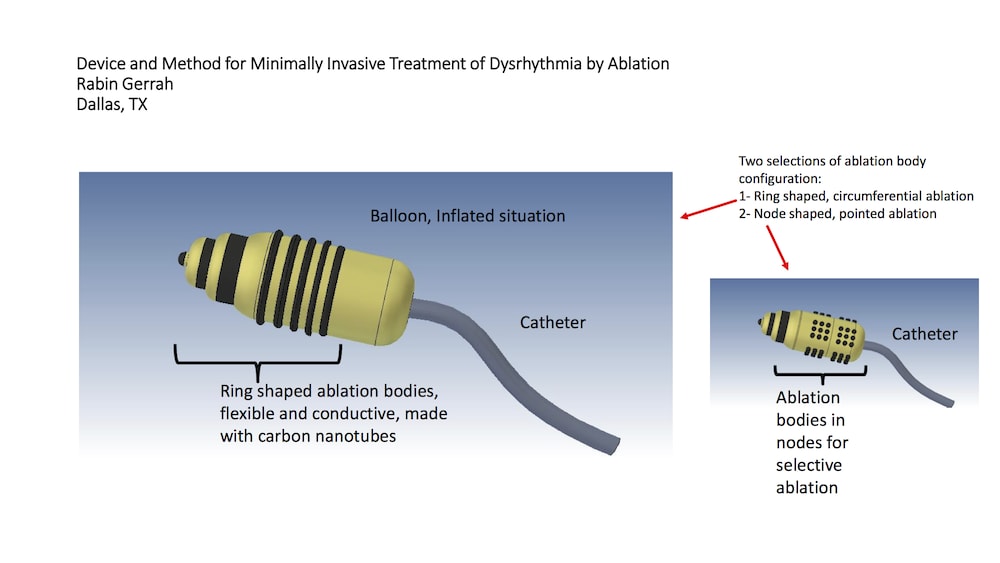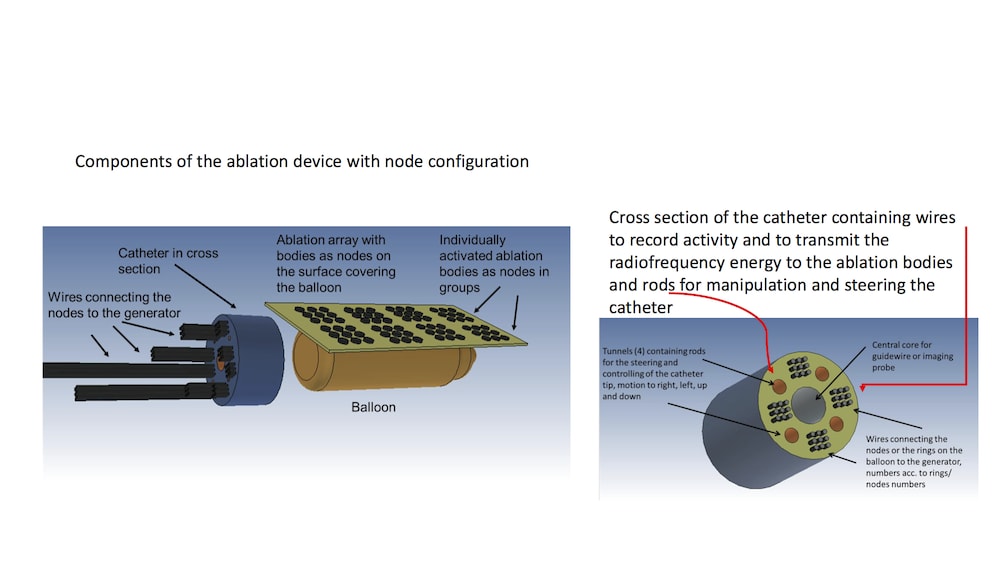Background
Abnormal heart rate or rhythm (dysrhythmia) is a common medical disorder worldwide. In its severe form it causes about 600,000 deaths annually. The ultimate treatment for this life threatening condition is ablation (burning) of the tissue that generates the chaotic electrical activity inside the heart. MAZE procedure is a common ablation method, performed during open heart surgery using readiofrequency energy or cryotherapy (freezing) to destroy the abnormal tissue in the heart.
Device
Our device uses radiofrequencey energy to perform the ablation without a need for open heart surgery. The device reaches inside the heart through the groin vessels, similar to angiogrpahy procedures performed by the interventional cardiologists in the cath lab.
The device is made from a catheter with a balloon attached to its tip. The balloon is equipped with flexible conductive elements made from carbon nanotubes in different shapes according to patients’ size and anatomy, location of the diseased focus and other variables. These conductive elements play two roles, to record the electrical activity inside the heart that locates and maps the disease area and also to deliver the energy to that specific location to ablate the disease focus.
Device operation
The device is inserted in the large vessel in the groin and advanced towards the heart under fluoroscopy. The maneuverable tip of the device enables it to reach to any location inside the heart, including the pulmonary vein orifices, usually containing the diseased tissue. As the tip of the device reaches the suspicious area, the balloon is inflated, the flexible conductive elements contact the tissue and the electrical activity is recorded. Once the culprit is found, radiofrequency energy is delivered through the appropriate element in touch with that focus to destroy the pathological area. The continuous monitoring and reading of the activity from the elements enables the performer to deliver the exact amount of energy needed for ablating the tissue and confirms resolution of the dysrhythmia.
The balloon is then deflated and the catheter is navigated to the next area, inflated, and the procedure is repeated until all areas (usually 4-5) are treated. The balloon is then deflated and the catheter is removed.
Benefits:
The balloon at the end of the catheter provides secure circumferential contact between the element and the heart in contrast to currently available catheters which are active at the tip only. This multi-area touch provides accurate diagnosis and treatment simultaneously.
Moreover, Inflation of the balloon temporarily blocks the blood flow in the ablation area during the ablation which minimizes blood contact and blood charring that normally occurs due to radiofrequency energy. With prevention of charring, risk of creation of particles in blood stream and eventually stroke is eliminated.
This device enables the procedure in minimally invasive technique and the patient can be discharged home immediately.
Like this entry?
-
About the Entrant
- Name:Rabin Gerrah
- Type of entry:individual
- Patent status:none





